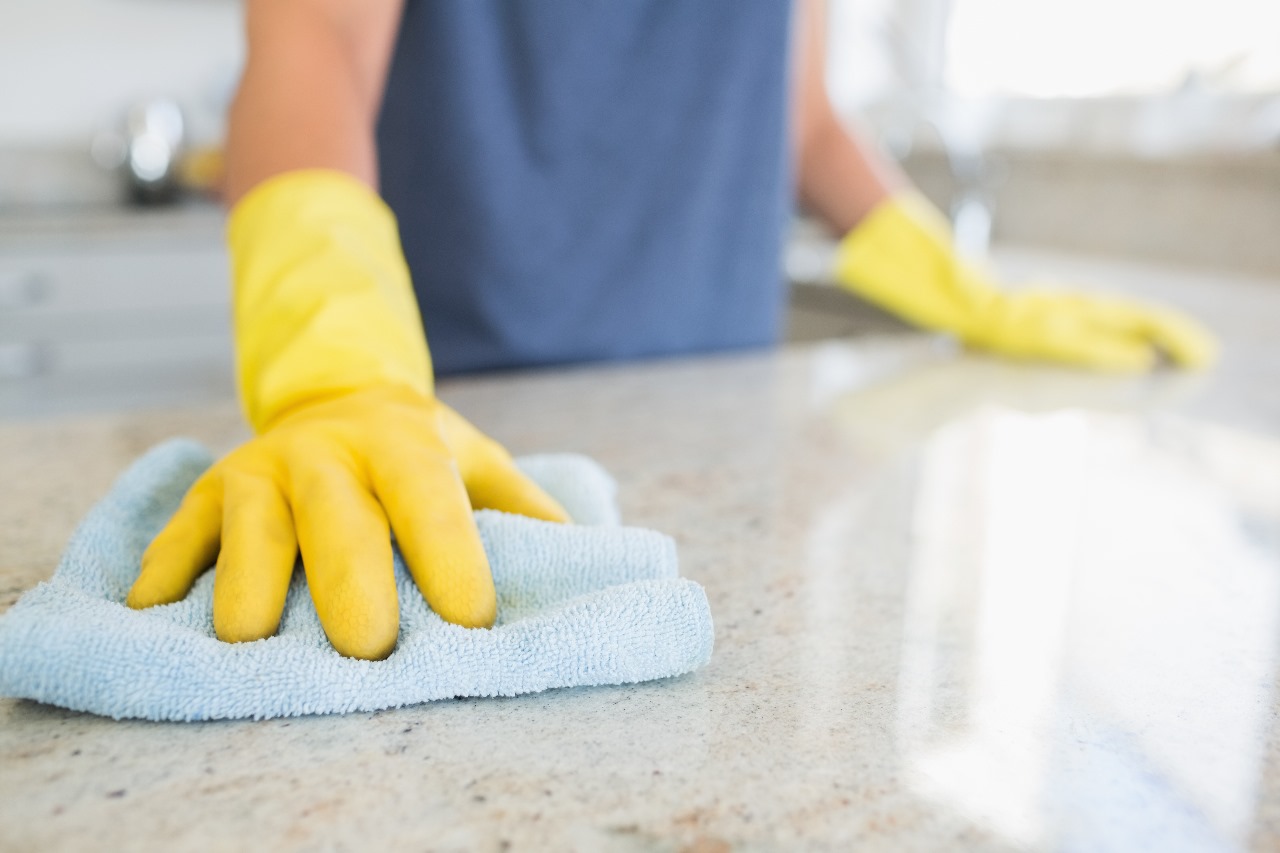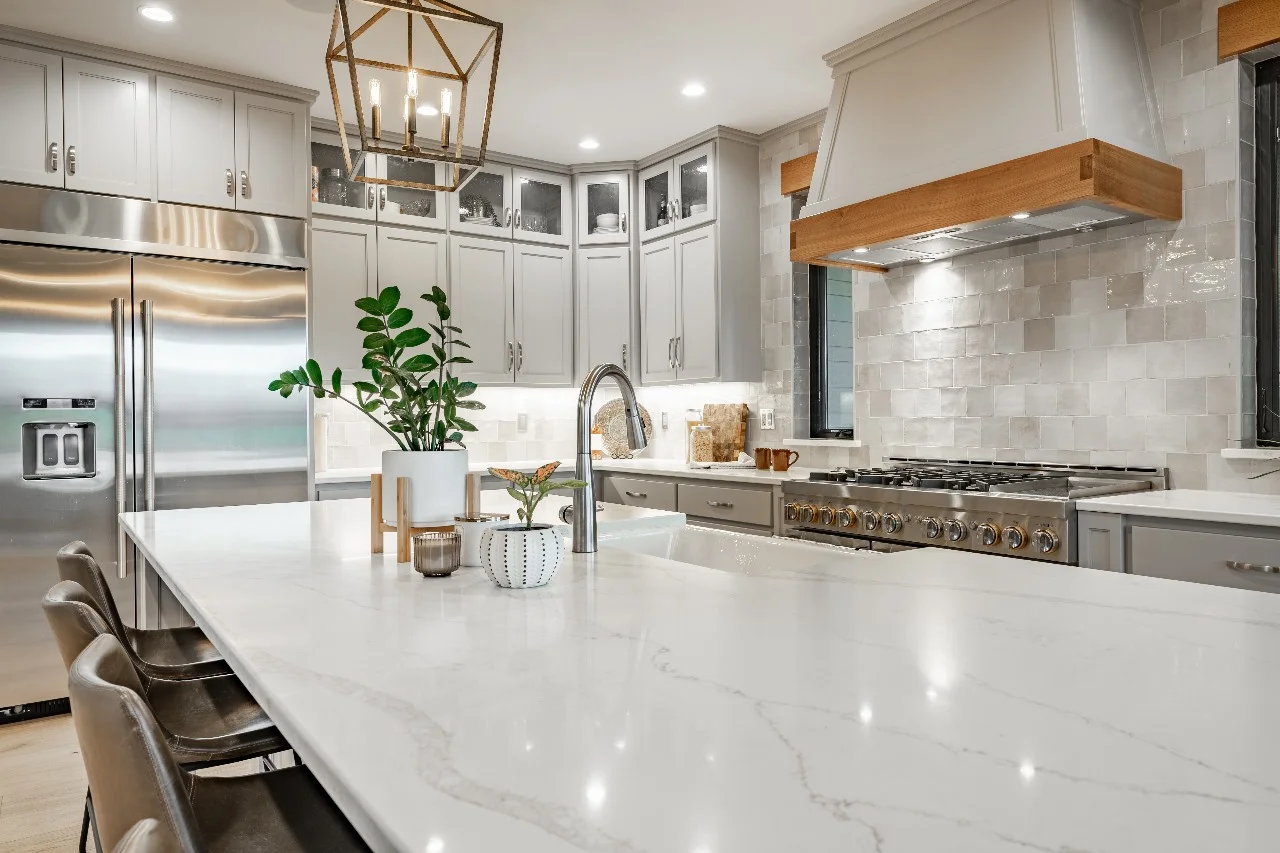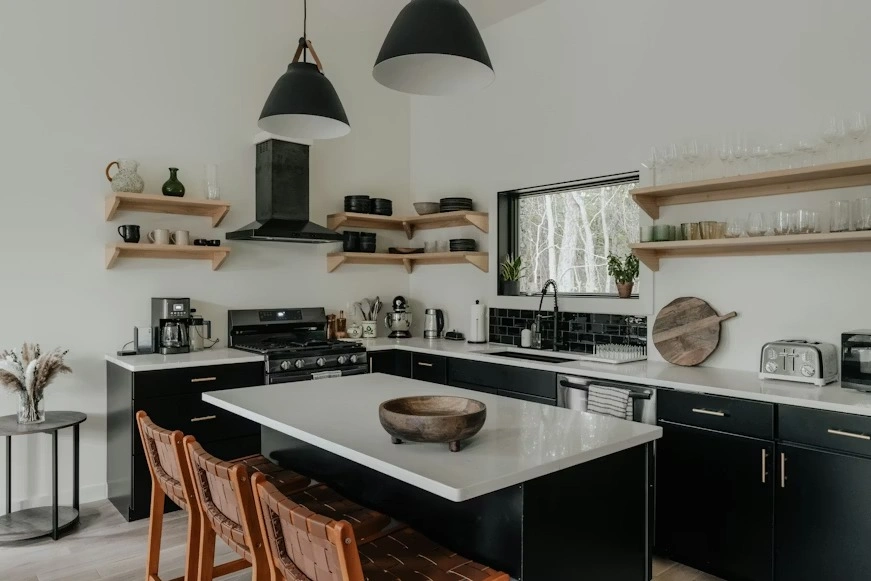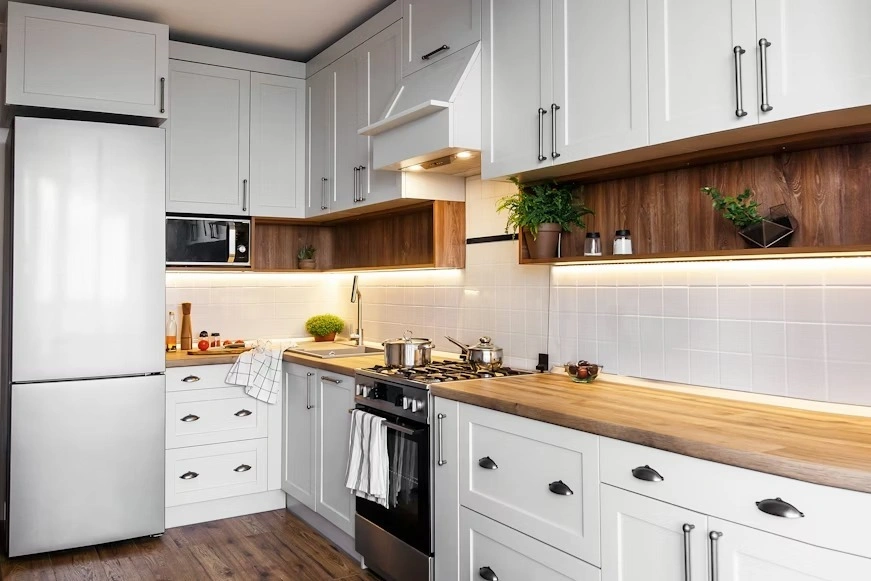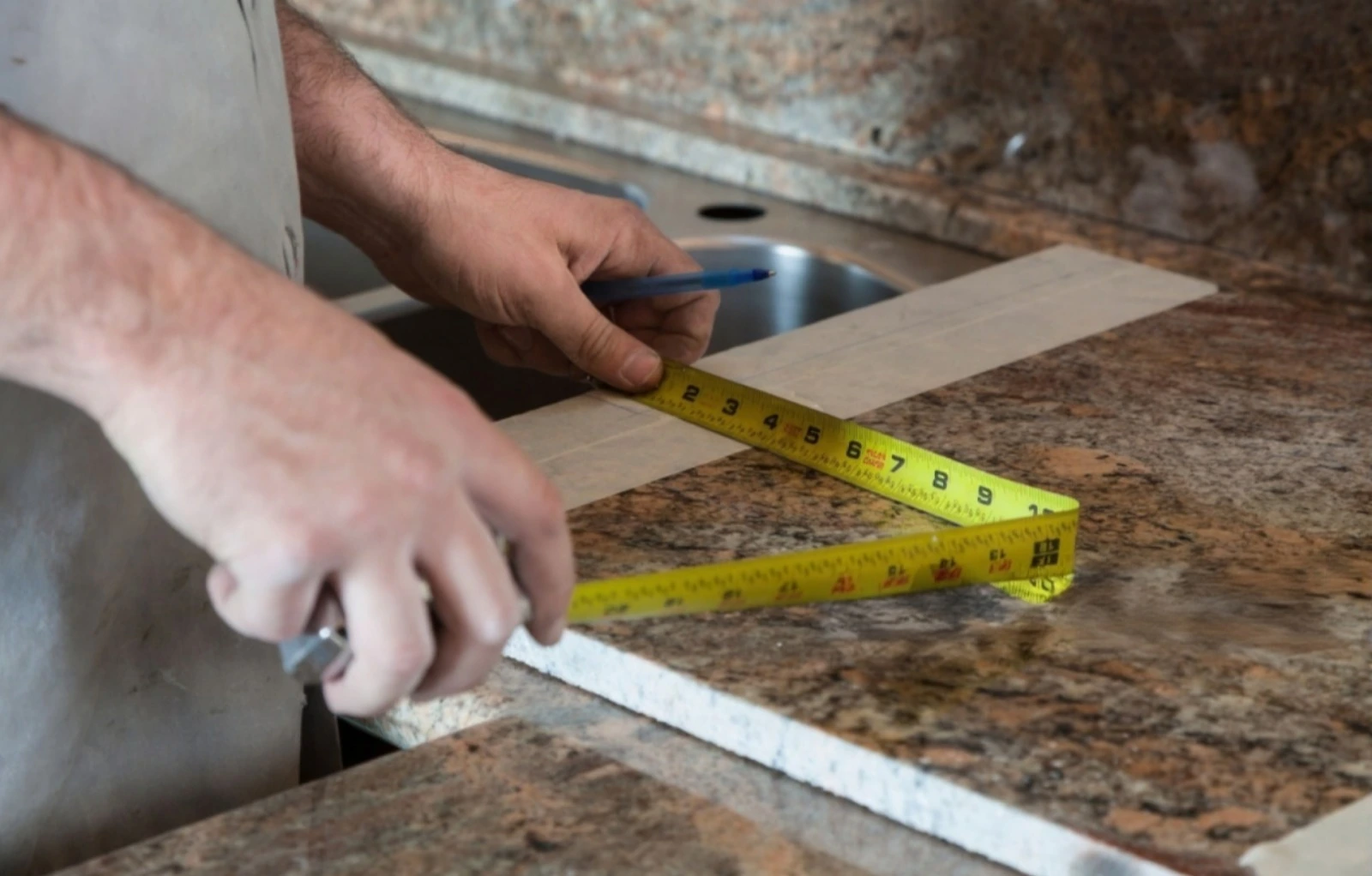Mixing countertop stones is a great way to make your kitchen look beautiful and special. When you blend granite, quartz, and marble, your kitchen becomes both strong and stylish. Each stone has its own benefit: granite is tough, quartz is easy to clean, and marble looks elegant. The best way to use them is to plan carefully. You can use granite for busy work areas and marble for places like a baking counter or island. Try to pick colors and patterns that look good together. With the right mix, your kitchen will look modern, balanced, and full of value.
Why Blend Granite, Quartz, and Marble?
In the past, people used only one stone for the whole kitchen or bathroom. Now, designers have started Mixing Countertop stones to make the room look more stylish and interesting.
When you combine granite, quartz, and marble together, your space looks custom-made and unique, not like everyone else’s.
Balancing Beauty and Use
Each of these stones brings something special:
- Granite gives natural colors and patterns.
- Quartz gives a smooth and clean look.
- Marble adds soft lines and a rich feel.
When you mix them the right way, you get the best of all three: beauty, strength, and easy care. Granite handles heat and heavy work, quartz fights stains, and marble becomes the “wow” part of the design.
Durability and Cost
Before you choose, it helps to see how they compare.
Basic Comparison of Granite, Quartz, and Marble
| Feature | Granite | Quartz | Marble |
| Durability | Very Strong | Strong | Medium |
| Cleaning | Easy | Very Easy | Needs Care |
| Price Range | $10 to $200+ per square foot | $55 to $155 per square foot | $75 to $250 per square foot. |
| Look | Natural | Smooth | Fancy Veins |
| Best Use | Busy Kitchens | Modern Counters | Decoration |
From this table, it’s clear that granite and quartz are great for areas you use daily. Marble is better for areas where you want beauty more than strength, like a center island or bathroom counter.
The Art of Mixing Countertop Stones
Mixing stones doesn’t mean putting three random pieces together. It’s like matching clothes; you need colors and textures that go well together. A good design has balance.
For Example, you can use granite for your main countertop, quartz for the backsplash, and marble for a corner accent. This mix gives a soft, modern, and rich look.
Making Your Design Look Right
The secret is balance.
Don’t use too many stones with busy lines and patterns together.
- If your granite has bold lines, use plain quartz beside it.
- If your marble has soft lines, you can match it with darker granite.
Designers follow a simple rule:
- Pick one main stone (granite or quartz).
- Add one stone that supports it (like marble).
- Use light and dark colors together for contrast.
This way, your whole room looks clean and beautiful, not messy or crowded. It’s one of the best ways of mixing Countertop Stones like a real designer.
Where to Use Each Stone?
You don’t have to use all three everywhere. Each stone has a “best spot”:
- Granite: Best for kitchen counters and work areas because it can handle heat.
- Quartz: Perfect for backsplashes or side counters since it’s smooth and easy to clean.
- Marble: Ideal for islands, tables, or bathroom tops for a soft and rich look.
In smaller kitchens, you can use marble only in a small section, like a stripe between granite counters, for a stylish touch.
Step-by-Step Guide to Mixing These Materials
You can mix these stones easily if you follow a few simple steps.
Step 1: Pick Your Main Stone
Choose one stone that will cover most of your space. Granite or quartz works best as the main one because they’re strong and affordable.
Step 2: Add a Second Stone for Contrast
Add a second stone (like marble) for a highlight. You can use it on the island top, backsplash, or even small side counters.
Step 3: Match the Surface and Edges
Try to match the finish (shiny, matte, etc.) across all stones. Also, keep the edges similar, rounded, or straight so the look feels even and smooth.
Step 4: Watch the Thickness
Each material can have different thicknesses. Your installer will fix this, but it helps to plan early so everything looks level.
Step 5: Seal and Protect
Granite and marble need sealing because they can absorb stains. Quartz doesn’t need sealing, so it’s easy to maintain. This is another reason designers love to combine granite, quartz, and marble: you get strength, shine, and easy care.
Quick Summary of the Mixing Process
Here’s a short version of what you just learned:
- Choose your main stone (granite or quartz).
- Add marble for contrast or decoration.
- Match color tones and finishes.
- Plan where each stone will go.
- Hire experts for cutting and installation.
This simple process helps you design your dream space without spending too much time or money.
Important Things Before Installation
After planning your design, it’s time to think about installation. This step is very important because stones are heavy and need careful handling.
A poor installation can ruin even the best design. So, always hire professionals who know how to handle mixing countertop stones safely.
Choosing the Right Company or Expert
Stones must be cut and fitted perfectly. That’s why it’s better to work with a company that knows granite countertop installation and marble countertop fabrication.
Good installers make sure that:
- All pieces fit smoothly.
- Joints and seams are invisible.
- Colors and patterns look balanced.
Ask your installer these questions before you start:
- How will you join the stones?
- Which glue or sealant will you use?
- How long will the work take?
- Do you give any warranty or support later?
These questions help you find the right expert and save you from problems later.
Maintenance and Cost Overview
It’s smart to know the cost and care for each material mix before you start.
Cost & Maintenance Overview
| Material Mix | Avg. Cost (per sq ft) | Maintenance | Best Place to Use |
| Granite + Quartz | $55–$140 | Low | Kitchen Counters |
| Quartz + Marble | $60–$250 | Medium | Bathrooms |
| Granite + Marble | $55–$225 | Medium | Kitchen Islands |
From this table, you can see that all mixes give different looks. Granite and quartz are the most practical for busy kitchens. Quartz and marble are great for spaces where beauty matters most.
Common Mistakes to Avoid
People often make small mistakes when trying to mix stones.
Here are two simple things to remember:
- Avoid Too Many Patterns: Don’t pick all stones with heavy lines. Use one with strong lines and the other with a calm surface.
- Watch the Colors: Some stones have warm tones (gold, yellow), others are cool (grey, blue). Mixing wrong tones can look odd.
If you avoid these mistakes, your kitchen or bathroom will look smooth, natural, and beautiful.
Why Professionals Matter?
Many people think they can install stones by themselves. But working with granite, quartz, and marble is not easy.
Experts have the right tools and know how to cut, fit, and seal the stones perfectly. They make sure everything is level, safe, and long-lasting.
Professionals also give useful advice about design and colors. You can visit a local showroom or call a fabricator to get free suggestions. It’s always better to spend a little more on a good expert than to risk breaking expensive stones.
Using Colors and Patterns Wisely
Color is the heart of any design. Granite usually comes with natural, speckled patterns. Quartz is more uniform, and marble has flowing, soft veins.
To make your design look professional:
- If your granite is bold, use plain quartz or calm marble with it.
- If you have light marble, pair it with dark granite for contrast.
- Always test small samples side by side before finalizing.
This small step helps you see how light, color, and pattern will look in your actual room.
Maintenance Tips for Long-Lasting Beauty
Your mixed countertops can stay nice and shiny for many years if you take a little care. The best part is, it’s very easy. Just clean them regularly and follow a few simple steps to keep your granite, quartz, and marble looking new.
Daily Care Tips
Wipe your countertops every day with a soft cloth, warm water, and a little soap. This helps keep them clean and smooth. Don’t use strong cleaners or bleach because they can make the surface dull. Always use a cutting board when chopping food so you don’t scratch the stone. Also, never put hot pots or pans directly on the counter. Use a mat or stand to protect it from heat.
Long-Term Care
After some time, your countertops need a bit of extra care. Seal granite and marble once or twice a year to stop stains and keep their shine. Quartz doesn’t need sealing, but it should still be cleaned often to stay bright. Every few months, check for cracks or dull spots and fix them early. These small steps will help your countertops stay strong, glossy, and beautiful for a long time.
5 Tips for Maintaining Your Granite and Quartz Countertops
Real-Life Examples
Here are some real design ideas you might love:
- White Quartz Counters + Gray Marble Backsplash: Gives a soft, clean, and classy vibe perfect for small kitchens.
- Black Granite + White Marble Island: A modern and bold look with strong contrast.
- Beige Granite + Cream Quartz: Warm and cozy feeling great for family homes.
Even in small bathrooms, you can mix stones by using marble for the sink counter and quartz for the side shelves.
Conclusion
Mixing countertop stones like granite, quartz, and marble is simple when you plan it well. When you combine granite, quartz & marble the right way, your home looks beautiful and stays strong for many years. Keep your design clean and balanced, and make sure the colors and patterns look good together. Use granite for strength, quartz for a smooth look, and marble for beauty. Always ask a professional to install them so everything fits perfectly. Whether you are making a new kitchen or fixing an old bathroom, this mix will make your space look elegant and special.
Ready to design your dream space? Visit your local stone showroom or contact a professional installer today to explore granite, quartz, and marble samples. Get advice on what combinations will fit your home perfectly and start your project with confidence!
FAQs
1. Can I mix all three stones, granite, quartz, and marble, in one kitchen?
Yes, you can. Just make sure the colors and patterns match well. Use one as the main stone and the others as accents.
2. Which mix is easiest to care for?
Granite and quartz together are the easiest to clean and maintain. Marble needs more care because it can be scratched easily.
3. Is mixing countertop stones expensive?
It depends on the type and size. Using more granite or quartz (and less marble) helps control costs.
4. Can I install them myself?
It’s better to hire professionals because cutting and leveling stones requires skill and tools.
5. How often should I reseal my countertops?
Granite and marble need resealing once or twice a year. Quartz doesn’t need it at all.

